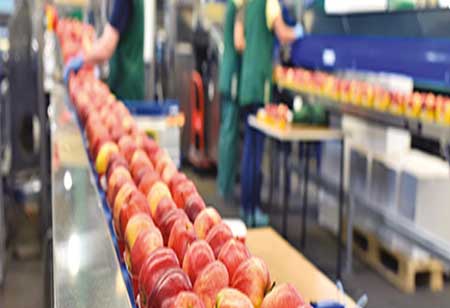THANK YOU FOR SUBSCRIBING
By Angela Morris, Head of Global IT Manufacturing Capabilities, The Kraft Heinz Company
Digital Transformation Begins With A State Of Mind And...
By Rick Stanbridge, CIO Emeritus, Marco’s Pizza
Top 2 Reasons To Switch To 100% Cloud-Based Technology...
By Chris Hellmann, Chief Commercial Officer, Restaurant Technologies
Every Dollar Matters - Those You See, And Those You Don't!
By Ted Beyer, Sr Quality Assurance Manager at Sun-Maid Growers
Training Team on Food Safety Threats: Intentional...

Trends in the Food and Beverages Industry
Pablo Sanhueza Castro, Corporate Manager of Quality, Safety and Operational Excellence, Empresas Iansa

 Pablo Sanhueza Castro, Corporate Manager of Quality, Safety and Operational Excellence, Empresas Iansa
Pablo Sanhueza Castro, Corporate Manager of Quality, Safety and Operational Excellence, Empresas IansaFrom my point of view regarding trends, we must consider those trends related to the products themselves, as well as those associated with the production and supply chain. From the perspective of the demand for new foods and beverages, in my opinion, the trends at this moment respond to three main guidelines: first, foods with specific sensory characteristics and better nutritional contributions; second, foods of sustainable origin and third, the effort towards the greater availability of food to combat the hunger and scarcity that are expected for the future. Certainly, it is nothing new that the focus remains on looking for tasty food alternatives that generate pleasure, the difference is that today the attribute of "healthy" is very important, for example, food that combats the tendency of suffering from chronic non-communicable diseases (NCDs) or, better yet, food with positive effects on human health. Examples of this are minimally processed or natural foods and ingredients that fit very well with the trend in the increase of "Flexitarian" consumers. These consumers are not completely vegetarian, but consciously incorporate plant-based options into their diet. In this same line, there has been a growing development of the alternative protein market, New Plant-Based Offerings, as well as the greater consumption of functional foods or "free from", "Clean Label" foods and food from farming products with reduced or zero use of agrochemicals and antibiotics. In the field of sustainability and availability, we find this extended product concept that promotes greater transparency in the supply chain, in which the properties of the production system are different according to the consumers, focused on "zero waste", with products and processes that contribute to sustainable food systems (ESG standards, waste recovery or circular economy models, loss and waste prevention, eco-friendly materials, efficiency in the use of resources, animal welfare and environmental footprints of CO2, water and energy), as well as higher value-added packaging that increases shelf life or information on the environmental and social footprint of the product and the producing companies.
Regarding the production chain trends, although it is true, in general, that manufacturing processes remain very similar in terms of line designs, factories and equipment, there has been an accelerated trend in the design of less intensive processes in terms of water and energy consumption. Similarly, the advancement in process automation has accelerated, especially in the handling of loads by robotization at the end of the line and logistics management (increased in the post-pandemic period as a result of labor conversion, labor shortages, the development of the e-commerce channel and last-mile logistics). Likewise, the level of technology to capture and process equipment data (IoT, AI, Machine Learning) has gone up as well as progress in predictive systems for reading and monitoring data from critical equipment to predict, through alerts, failures or lack of control trends that translate into defects, safety risks or losses of materials and productivity.
This type of technology is more widely used for the development of smart factories that perform with the support of efficient energy consumption measurement and management systems, as well as in the development of traceable, agile and safe production chains. AI is also increasingly applied in precision agriculture, to respond to a demand for greater availability of food of plant origin, for a growing population, since, as expressed by FAO, by 2030 we will have to produce 70% more food for more than 2.3 billion additional people.
“Regarding the production chain trends, although it is true, in general, that manufacturing processes remain very similar in terms of line designs, factories and equipment, there has been an accelerated trend in the design of less intensive processes in terms of water and energy consumption.”
In addition to technological development, the application of principles of Operational Excellence has also expanded rapidly in the food and beverage industry and led to a greater focus on process standardization and the use of continuous improvement methodologies that translate into an "end-to-end" chain, that is leaner and more agile and permanently works on eliminating processes that do not add value and improves the use of raw materials and a culture of zero defects and incidents. Through this type of approach companies can optimize their costs and mitigate the effects of inflation that have been generated by various factors, such as the disruption of the supply chain by the war between Russia and Ukraine, as well as late effects of the Covid-19 pandemic.
Read Also














